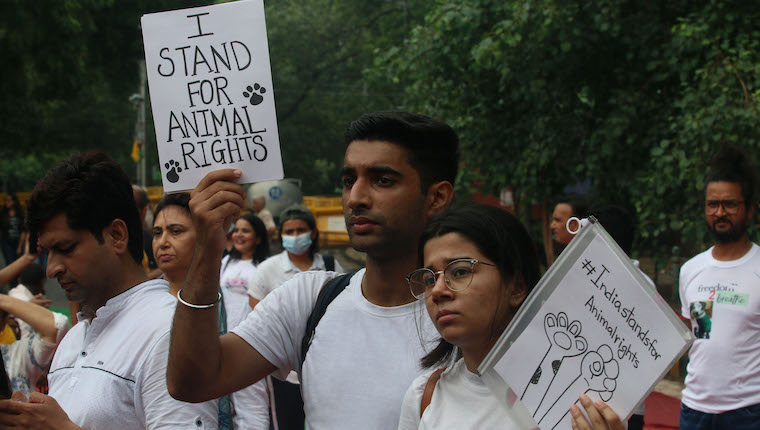
A recent flurry of misleading ads, videos, and memes on social media are fueling anger towards stray dogs in the Indian state of Kerala, according to the BBC.
Misinformation and Paranoia Endanger Indian Stray Dogs
In one example, an ad shows a man lacing up his running shoes and working through an obstacle course. As he climbs walls and weaves through traffic cones, someone asks whether he’s training to join the army. Surprisingly, the man’s friend replies that he’s actually training to run from stray dogs.
Unfortunately, the ad seems to be normal these days. Recently, Kerala citizens have created tons of content expressing anger towards strays. Not surprisingly, local media reports of dogs attacking people are making things worse.
According to the most recent government survey, India’s stray dog populations are actually declining; no doubt in part to recent public health campaigns. However, animal welfare advocates say cultural attitudes towards strays skew public opinion. According to one activist, Sally Varma, “Here, even pet dogs are mostly kept in kennels or caged or tied up for the entire day. Rarely do people let their dogs inside their homes.”
Shockingly, Kerala ranked sixth in the nation in dog bites for 2022. Altogether, the city recorded 100,000 bites in seven months. That’s more than double from the year before.
On top of that, deaths from rabies and recent questions over the efficacy of state vaccinations have sowed doubt. Frustratingly, experts decry the cascade of misinformation on social media and local news networks.
Dr. Beena D, vice president of the state chapter of the Indian Veterinary Association, says, “cases like these trigger a storm of daily news reports that don’t really contribute to public awareness.”
Looking for Long-Term Solutions
For now, while activists don’t blame people for being afraid, they continue to say violence is not a solution. Responding to public pressure, the state government recently approached the Indian Supreme Court for permission to cull “aggressive and rabid” dogs. However, advocates and veterinarians say that these measures are short-sighted and don’t attack the root of the issue. According to them, birth control programs, vaccinations, and funding for shelters will not only ease people’s fears, but will also save the dogs’ lives and — hopefully — change attitudes towards them.
As Varma says, “It’s not that people are bad. It’s just that a lot of things are unclear and people are worried for their safety.”








